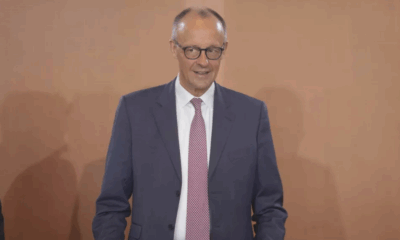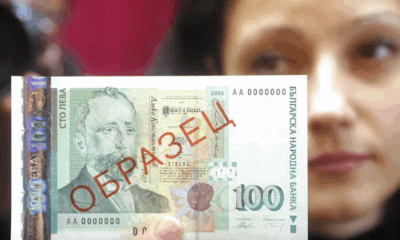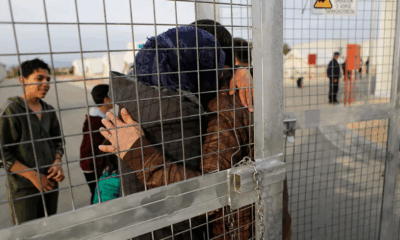News
Record Greenhouse Gas Levels in 2023 Intensify Global Warming Concerns, UN Reports
Greenhouse gas concentrations surged to unprecedented levels in 2023, locking the planet into a trajectory of rising temperatures, according to the World Meteorological Organization (WMO). The WMO’s latest greenhouse gas bulletin, released Monday, highlights the accelerating accumulation of carbon dioxide in the atmosphere—now increasing faster than at any point in human history. In just two decades, CO2 concentrations have jumped by 11.4%.
This past year saw a notable increase in CO2 emissions, exceeding 2022 levels and marking the second-largest annual rise in the last decade. The WMO attributes the sharp rise to a combination of severe forest fires and a decline in carbon absorption by forests, compounded by sustained human-generated CO2 emissions. The report also shows that methane and nitrous oxide levels reached record highs, with CO2 now standing at 151% of pre-industrial levels, methane at 265%, and nitrous oxide at 125%.
Ahead of the COP29 climate summit scheduled for next month in Baku, Azerbaijan, WMO Secretary-General Celest Saulo warned that these findings should “set alarm bells ringing” for global policymakers. “We are clearly off track to meet the Paris Agreement’s goal of limiting global warming to well below 2°C, with an aim for 1.5°C above pre-industrial levels,” Saulo noted. “These are more than just statistics; each part per million and every fraction of a degree increase has real consequences on our lives and our planet.”
In a related report, the United Nations also issued an assessment of the current state of national climate policies, finding that commitments made by countries under their Nationally Determined Contributions (NDCs) are still insufficient to curb the worst impacts of climate change. The UN report shows that the collective efforts fall far short of the emissions cuts required to limit warming to the Paris Agreement’s 1.5°C target.
According to the Intergovernmental Panel on Climate Change (IPCC), a 43% reduction in emissions is needed by 2030 to meet this target. However, under current policies, global emissions are only projected to decline by 2.6% from 2019 levels by the end of the decade—a reduction of about 51.5 gigatonnes of CO2, which the UN states is “marginal progress.” The report underscores the need for significantly more ambitious climate actions ahead of the February 2024 deadline for updated NDCs.
Simon Stiell, Executive Secretary of the United Nations Framework Convention on Climate Change (UNFCCC), emphasized the urgency of the situation, stating that current national plans are “miles short” of what is necessary to avert catastrophic climate outcomes. “This report should be a turning point,” said Stiell, urging leaders to deliver substantial progress at COP29. He further highlighted the transformative potential of ambitious climate policies, suggesting they could bring economic and social benefits alongside environmental gains.
The findings come on the heels of a sobering assessment from the United Nations Environment Programme last week, which indicated that the possibility of limiting global warming to 1.5°C above pre-industrial levels is “virtually zero.” The mounting evidence of missed climate targets has intensified calls for action, as COP29 approaches with renewed global focus on addressing the climate crisis.
News
Two Dead, Nearly 200 Injured as PSG Title Celebrations Turn Violent Across France

What began as jubilant celebrations of Paris Saint-Germain’s historic UEFA Champions League victory ended in violence and tragedy in parts of France, with two people killed and nearly 200 injured during street festivities that spiraled out of control.
Authorities confirmed on Sunday that a 17-year-old boy was fatally stabbed in the southwestern town of Dax during a PSG street gathering, while in Paris, a man died after his scooter was struck by a car amid the crowded celebrations. Both incidents are currently under investigation.
The unrest followed PSG’s dramatic win in Munich, where the club secured its first-ever Champions League title, marking a milestone in French football history. While fans across the country took to the streets to celebrate, several areas descended into violence.
According to the French Interior Ministry, a total of 294 people were arrested nationwide as of 2 a.m. Sunday. Of the nearly 200 injured, 21 were police officers—18 of them in Paris alone. One officer remains in a medically induced coma after being struck in the face by a firework.
Interior Minister Bruno Retailleau condemned the violence in a statement on social media. “True PSG fans are celebrating a magnificent achievement. Meanwhile, barbarians have taken to the streets to commit crimes and provoke law enforcement,” he said. “It is unacceptable that people cannot celebrate without being endangered by a violent minority.”
Despite the unrest, the majority of gatherings were peaceful, authorities noted, with large crowds celebrating the historic win in cities including Marseille, Lyon, and Lille.
The PSG squad returned to Paris from Munich on Sunday afternoon aboard a Qatar Airways charter flight, arriving at 4 p.m. The team is expected to continue celebrations in the capital with tens of thousands of fans, under heightened security measures.
The violent turn of events has reignited debate in France over crowd control during major sporting celebrations, and how best to ensure public safety without dampening national enthusiasm.
PSG’s Champions League triumph marks a defining moment for the club, which has long pursued European glory. As the team prepares for a hero’s welcome, officials are urging fans to celebrate responsibly and respect public safety.
News
Ukraine Launches Major Drone Assault on Russian Airfields, Hits Over 40 Strategic Bombers

Ukraine’s Security Service (SBU) has claimed responsibility for a large-scale drone strike on four Russian air bases over the weekend, targeting dozens of strategic bombers across vast swaths of Russian territory — from Siberia to the Arctic.
According to Ukrainian officials, the operation, codenamed “Spiderweb” (Pavutyna), was launched on June 1 and struck 41 long-range bombers stationed at airfields in Russia’s Ryazan, Ivanovo, Irkutsk, and Murmansk regions. The attack is being hailed by Kyiv as one of its most ambitious and far-reaching strikes since the beginning of Russia’s full-scale invasion.
“Enemy strategic bombers are burning en masse in Russia,” a senior SBU official said, noting that the operation was specifically designed to cripple Moscow’s airstrike capabilities. “This is a large-scale special operation aimed at destroying enemy bomber aircraft.”
The four airfields targeted were Dyagilevo in the Ryazan region, Ivanovo in central Russia, Belaya air base in Irkutsk — over 4,000 kilometers from the front lines — and Olenya air base on the Kola Peninsula near the Arctic, roughly 2,000 kilometers from Ukraine’s border.
Ukrainian officials described the complex logistics of the operation, which involved covertly transporting drones deep into Russian territory, hiding them until the time of launch, and remotely executing the strikes. While specific details remain classified, Ukraine previously revealed it had developed drones with a flight range of up to 3,000 kilometers, enabling long-range operations like this.
Satellite imagery analyzed after the attack shows the presence of several high-value Russian aircraft types at the affected bases, including the Tu-95, Tu-22M3, Tu-160, and A-50 radar planes. These aircraft have been central to Russia’s long-range missile campaign against Ukraine.
The Tu-22M3, for example, is capable of carrying Kh-22 and Kh-32 cruise missiles at speeds exceeding Mach 4. The Tu-95, a Cold War-era bomber once designed to carry nuclear weapons, has been retrofitted to launch conventional cruise missiles. The A-50 aircraft provides airborne radar surveillance and target coordination for Russian forces.
The scale of the strike underscores Ukraine’s growing long-range capabilities and signals a shift in Kyiv’s strategy to disrupt Russian air operations at their source. President Volodymyr Zelenskyy said he had held meetings with the Ministries of Defense and Foreign Affairs, along with the General Staff and SBU, to coordinate further defense and counter-offensive planning.
There has been no immediate official response from Moscow regarding the extent of damage caused.
News
German Chancellor Merz to Meet President Trump in Washington Amid Global Tensions
-

 Business1 year ago
Business1 year agoSaudi Arabia’s Model for Sustainable Aviation Practices
-

 Business1 year ago
Business1 year agoRecent Developments in Small Business Taxes
-

 Politics1 year ago
Politics1 year agoWho was Ebrahim Raisi and his status in Iranian Politics?
-

 Business11 months ago
Business11 months agoCarrectly: Revolutionizing Car Care in Chicago
-

 Business11 months ago
Business11 months agoSaudi Arabia: Foreign Direct Investment Rises by 5.6% in Q1
-

 Technology1 year ago
Technology1 year agoComparing Apple Vision Pro and Meta Quest 3
-

 Politics1 year ago
Politics1 year agoIndonesia and Malaysia Call for Israel’s Compliance with ICJ Ruling on Gaza Offensive
-

 Sports10 months ago
Sports10 months agoKeely Hodgkinson Wins Britain’s First Athletics Gold at Paris Olympics in 800m






























